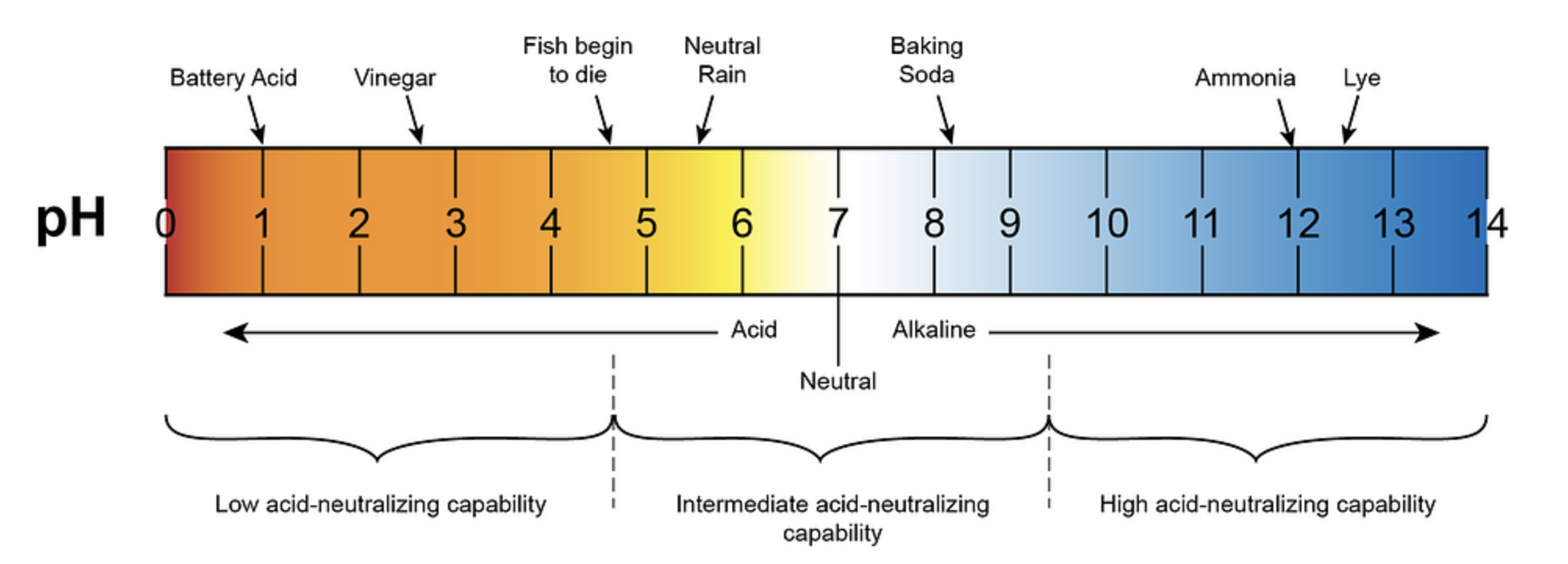The pH value of ammonium fluoride in water is typically between 6.00 – 7.00, slightly acidic compared to the neutral pH of 7.0. This range can vary depending on the concentration of the ammonium fluoride solution and the presence of other substances or contaminants. Handling ammonium fluoride requires caution, as it can release hydrofluoric acid, a highly dangerous substance.
Understanding the pH of Ammonium Fluoride in Water
When ammonium fluoride (NH4F) is dissolved in water, it can undergo a series of chemical reactions that affect the pH of the solution. The primary reaction is the dissociation of ammonium fluoride into ammonium ions (NH4+) and fluoride ions (F-):
NH4F ⇌ NH4+ + F-
The presence of these ions in the solution can influence the pH, as the ammonium ions can act as a weak acid, while the fluoride ions can act as a weak base. The overall pH of the solution is determined by the balance between these two opposing effects.
Factors Affecting the pH
The pH of an ammonium fluoride solution in water can be influenced by several factors:
-
Concentration: The higher the concentration of ammonium fluoride in the solution, the more pronounced the acidic or basic effects will be, leading to a lower or higher pH, respectively.
-
Presence of Impurities: Ammonium fluoride solutions may contain various contaminants, such as chloride, nitrate, phosphate, sulfate, and metals. These impurities can alter the pH of the solution, either increasing or decreasing it.
-
Temperature: The pH of the solution can also be affected by temperature changes, as the dissociation of ammonium fluoride and the ionization of water are temperature-dependent processes.
-
Dilution: When ammonium fluoride is diluted in water, the pH of the solution may change due to the altered concentration of the ions.
Handling Ammonium Fluoride with Care
Ammonium fluoride is a hazardous chemical that requires special handling precautions. When ammonium fluoride comes into contact with water or moist skin, it can release hydrofluoric acid (HF), which is a highly corrosive and toxic substance.
To ensure safe handling of ammonium fluoride, it is essential to:
-
Wear Appropriate Personal Protective Equipment (PPE): This includes gloves, goggles, and a lab coat or apron to prevent skin and eye exposure.
-
Work in a Well-Ventilated Area: Ensure adequate airflow to minimize the risk of inhaling any fumes or vapors.
-
Avoid Skin Contact: Take care to avoid any direct skin contact with ammonium fluoride, as it can lead to severe chemical burns.
-
Properly Dispose of Waste: Follow local regulations and guidelines for the safe disposal of ammonium fluoride and any contaminated materials.
Balancing the pH of Ammonium Fluoride Solutions
To adjust the pH of an ammonium fluoride solution, you can add a base or an acid, depending on the desired pH range. Here are some general guidelines:
-
Raising the pH: To increase the pH of an ammonium fluoride solution, you can add a base, such as sodium hydroxide (NaOH). This will neutralize the acidic effects of the ammonium ions and increase the pH.
-
Lowering the pH: To decrease the pH of an ammonium fluoride solution, you can add an acid, such as hydrochloric acid (HCl). This will enhance the acidic effects of the ammonium ions and lower the pH.
It is crucial to add the base or acid slowly and carefully, while continuously monitoring the pH to avoid overshooting the desired range. Proper pH adjustment is essential to ensure the safe and effective use of ammonium fluoride solutions.
Conclusion
The pH of ammonium fluoride in water is typically in the range of 6.00 – 7.00, slightly acidic compared to the neutral pH of 7.0. This pH can be influenced by various factors, such as concentration, the presence of impurities, temperature, and dilution. When handling ammonium fluoride, it is crucial to take appropriate safety precautions to avoid exposure to the hazardous hydrofluoric acid. To balance the pH, you can add a base or an acid, but it is essential to do so slowly and carefully, while monitoring the pH to maintain the desired range.
References:
– Wikipedia – Ammonium Fluoride
– Solvay – Ammonium Fluoride Product Safety Summary
– VWR – Ammonium Fluoride Solution
– Honeywell – Ammonium Fluoride Solution

